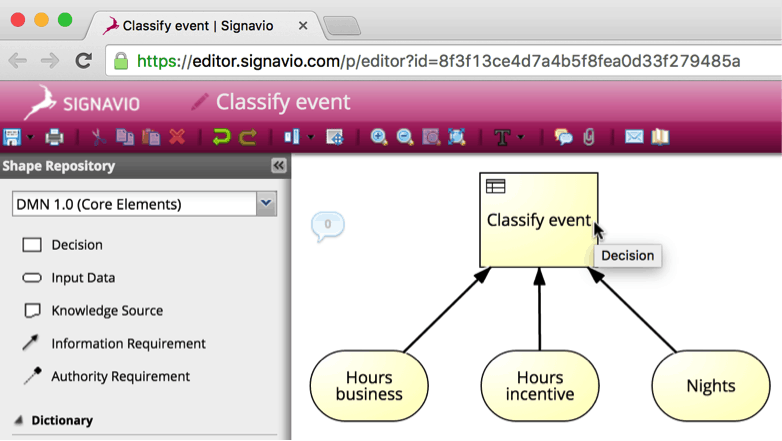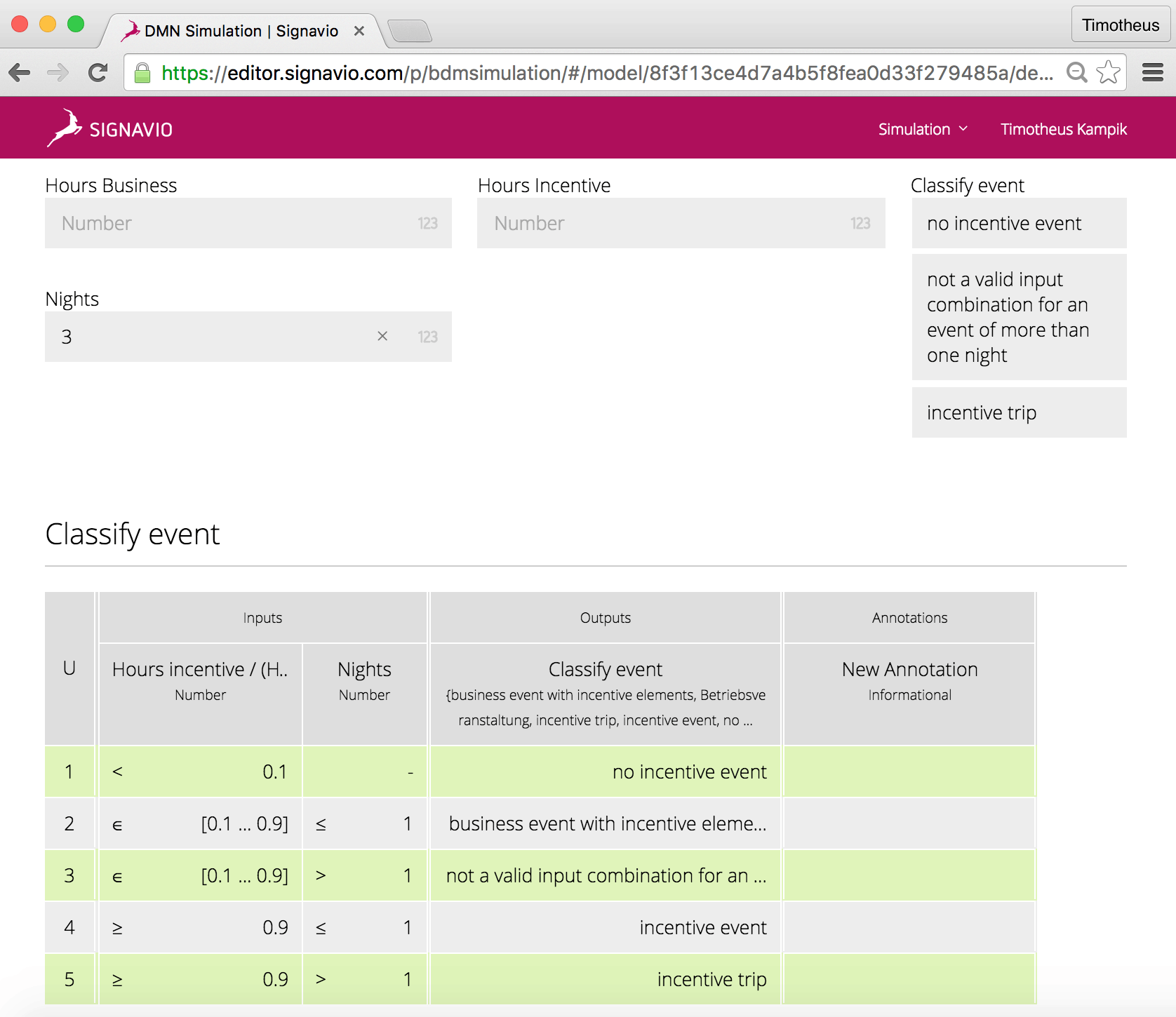Without all of the information about the event, you cannot decide which classification applies. However, you may still be able to narrow down the possibilities. In such a scenario, it is useful to determine a decision outcome without having a specific value for each input parameter.
Let’s have a look at the corresponding decision diagram:
Depending on the length of the trip (the number of nights) and the relation between business hours (working time) and incentive hours (leisure time), the following classifications are possible:
- no incentive event
- business event with incentive elements
- incentive event
- incentive trip
- not a valid input combination for an event of more than one night
We already know the trip will include three overnight stays, but we don’t know how we will split the time between incentive and business hours, yet. Accordingly, we specify the amount of Nights in the Signavio BDM Simulation and leave the input fields for Hours Business and Hours Incentive empty:
As we can see above, the decision outcome is now narrowed down to the following three results:
- no incentive event
- incentive trip
- not a valid input combination for an event of more than one night
Thus, we know the only acceptable classification outcomes are 'no incentive event' and 'incentive trip'. When discussing the trip planning with a supervisor, we can present a compact set of merely two practicable decision outcomes and suggest to optimize the amount of Business Hours and Incentive Hours to achieve a classification that is favorable from a taxation perspective.
Further possible scenarios for simulating business decisions without precisely specified inputs are, for example:
- Determining the range of purchase discounts without specifying a customer’s status.
- Determining the range of risk categories of a credit bank customer without having access to the customer’s exact gross monthly income.
Pro Tip:
The Signavio BDM Simulation is capable of processing input sets as literal expressions. In our example, the Simulation is computing the expression HoursIncentive / (HoursBusiness + HoursIncentive), with HoursIncentive,HoursBusiness being positive numbers or zero (The system will catch a possible division by zero error).


